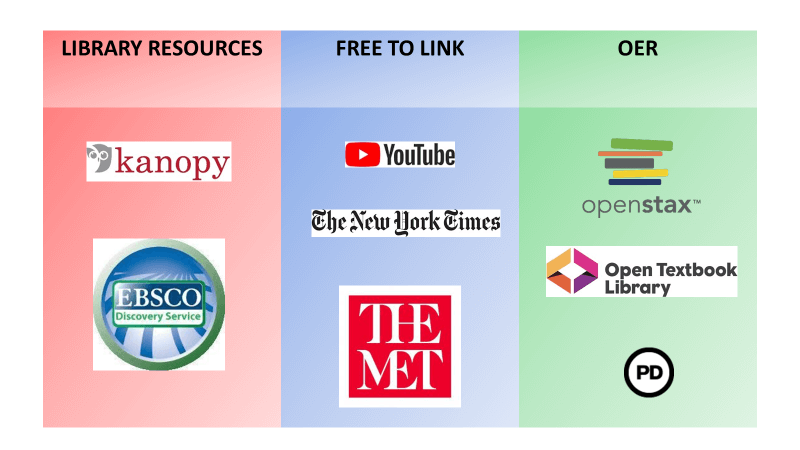Paperwork & procedure
Once you have completed the requirements listed above, we will get system notification from our end. After we have confirmed all your submissions, we pass on your information to the Provost’s Office. They will start processing paperwork so that you can submit non-teaching adjunct (NTA) timesheet online.
We will contact you when it's ready for you to submit online timesheet. Once you submit the timesheet, it will be approved and routed to timekeeping and payroll for final processing. We will keep you updated along the way and provide you with an estimated pay date once timesheet is submitted.
Timesheet
The Provost’s Office compensates faculty who participated in the CUNY OER Initiative using NTA payroll. The NTA payrate may not be your current teaching rate. This is for payroll purposes and doesn’t reflect your actual FT/PT employment status or salary on campus.
After you have completed all the requirements to either adopt or develop your course(s) and everything has been reviewed, we will contact you through your CCNY faculty email when it's time to submit a NTA timesheet online. Further instructions will be given then.
Direct deposit or paper check
If you never set up direct deposit, your stipend in paper check will be available at the Bursar's Office. At this time, payroll is mailing out all paper checks and no pick up is required.
The OER stipend doesn't automatically get rolled into your regular teaching salary/paycheck deposit even if you normally receive your regular teaching paycheck through direct deposit. By default, you should expect OER paper check unless you have requested payroll to link all your "jobs/projects/income" on campus into a single payment.
If you want to have your jobs linked and receive a single direct deposit, you will need to make a request with payroll. This normally takes 1-2 pay periods before it goes into effect. After you have requested payroll to link all your jobs, future OER stipends will be added to direct deposit automatically if you work with us again.
CCNY OER Initiative workflow

FAQ
How do I know if I want to develop or adopt a course? What are the benefits of doing it either way?
The main benefit of adopting is that the legwork of finding the OER readings and designing the course has already been done for you, since others have found awesome OER readings for the courses already. You can still make tweaks to the syllabus to make it your own.
Developing is really for instructors who are either teaching a course as OER that has never been OER before or teaching a previously developed OER course in an entirely new manner with entirely new readings.
I’m a full-time faculty. Why do I get paid as non-teaching adjunct (NTA)?
The Provost’s Office compensates faculty who participated in the CUNY OER Initiative using NTA payroll. This is for payroll purposes and doesn’t reflect your FT/PT employment status on campus.
Are graduate courses eligible for stipend?
Graduate courses are not eligible for stipend. You may still choose to convert graduate course(s), but we won't be able to compensate your effort.
If I develop two (2) sections of a course (ENGL 21008) as ZTC, does that mean I’m eligible for $2000 stipend?
The stipend is calculated based on the number of courses, not sections. That means, you will get $1000 for developing a course.
I’m teaching a jumbo/large enrollment course. Do I get more stipend?
If you teach 5 or more sections or has 100 students, you are eligible for higher stipend amount. Note that we go by the official enrollment number in CUNYFIrst to determine if your course is considered a large-enrollment course. Please email us at [email protected].
Will I get the stipend in direct deposits or paper checks?
If you never set up for direct deposit, your stipend in paper check will be available at the Bursar's Office. At this time, payroll is mailing out all paper checks and no pick up is required.
If you normally receive your regular teaching paycheck through direct deposit but never told payroll to link all your "jobs/projects/income" on campus into a single payment, by default you should expect OER paper check. OER stipend doesn't automatically get rolled in to your regular teaching salary/paycheck deposit, unless you have requested payroll to link all your incomes.
I prefer direct deposit than paper check. Can I sign up for direct deposit?
You need to contact payroll to link/group all your jobs/incomes on campus into a single direct deposit. This normally takes 1-2 pay periods before it goes into effect. After you have made a request at the payroll, future OER stipends will be added to direct deposit automatically if you work with us again.
Can you mail the stipend check to my home address?
We are not authorized to handle the physical check. You will need to contact the Bursar’s office to make this arrangement. At this time, payroll is mailing out all paper checks and no pick up on campus is required.
Attribution
This module was created by Julia Brown, Vivian Chan, Ching-Jung Chen, Julia Brown, and Chavonne Rodriguez.


